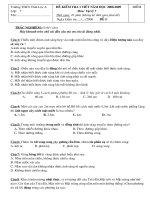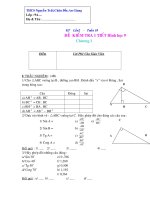- Trang chủ >>
- Đề thi >>
- Đề thi lớp 4
slide 1 period 35th unit 7 i before you read world population where can you find these scenes in under developed countries period 35th unit 7 i before you read world population what does this picture
Bạn đang xem bản rút gọn của tài liệu. Xem và tải ngay bản đầy đủ của tài liệu tại đây (1.05 MB, 13 trang )
<span class='text_page_counter'>(1)</span><div class='page_container' data-page=1></div>
<span class='text_page_counter'>(2)</span><div class='page_container' data-page=2></div>
<span class='text_page_counter'>(3)</span><div class='page_container' data-page=3></div>
<span class='text_page_counter'>(4)</span><div class='page_container' data-page=4>
Where can you find these scenes?
</div>
<span class='text_page_counter'>(5)</span><div class='page_container' data-page=5>
<b>Period 35th</b>
<b>Unit 7: </b>
I.Before you
read
<b>WORLD POPULATION</b>
What does this picture tell you?
It describes a poor large family in the countryside.It
tells us that If we have a big family, we may not
support our children properly and give them a good
</div>
<span class='text_page_counter'>(6)</span><div class='page_container' data-page=6>
What does this picture tell you?
It describes a poor slum in a small town. It indicates
that population explosion can lead to poverty and
</div>
<span class='text_page_counter'>(7)</span><div class='page_container' data-page=7>
<b>Period 35th</b>
<b>Unit 7: </b>
I.Before you
read
<b>WORLD POPULATION</b>
• B.C. : Before Christ trước Cơng ngun Ex: In 2000 B.C.
• A.D. : Anno Domini sau Công nguyên Ex: In A.D. 2000
• figure (n): con số
• (to) double gấp đơi
• resource (n) nguồn tài nguyên
• (to) support : cung cấp = provide
• (to) limit: hạn chế
• birth-control method (n) phương pháp hạn chế sinh sản
</div>
<span class='text_page_counter'>(8)</span><div class='page_container' data-page=8>
II. While you
read
The word in the box
all appear in the
passage.
Fill each blank with a
suitable word.
(Change the form of
the word and useThe
dictionary when
necessary)
</div>
<span class='text_page_counter'>(9)</span><div class='page_container' data-page=9>
<b>Period 35th</b>
<b>Unit 7: </b>
I.Before you
read
II. While you
read
1. Task 1
<b>WORLD POPULATION</b>
Limit figures method although
Control increase international resources
1. ………..most journalists studied journalism in
college, some older writers never attended a
university.
2. Can you explain the ……….. for changing salt
water to fresh water.
3. The number of injuries from automobile
accidents…………
every year
4. Some countries are poor…………..because they
have every few natural………..
although
method
increases
</div>
<span class='text_page_counter'>(10)</span><div class='page_container' data-page=10>
II. While you
read
1. Task 1
Control increase international resources
5. These are all …………1,75,293.
6. There is a(n)………of 20 minutes for this short
test. Students must turn in their papers at the end of
the 20th minute
7. The United Nations is a(n) ……….
organisation
8. Some children behave badly and their parents can’t
……….them
figures
limit
internatonal
</div>
<span class='text_page_counter'>(11)</span><div class='page_container' data-page=11>
Task 2. Answer the questions on the passage.
1. What was the population of the world in 10,000 B.C.,1750, 1850, 1950, 1985,
and 2000?
2. How many people is the world expected to have by the year 2015?
3. Can the Earth have enough resources to support its population?
4. Do most Third World women want to have a lot of children?
5. Why can’t women in the world limit the size of their families?
The population of the world in 10,000 B.C was 10 million, in 1975 it was 625 million ,
The population of the world in 10,000 B.C was 10 million, in 1975 it was 625 million ,
in 1850 it was 1,300 million, in 1950 it was 2,510 million, in 1985 it was 4,760
in 1850 it was 1,300 million, in 1950 it was 2,510 million, in 1985 it was 4,760
million, in 2000 it was 6.6 million.
million, in 2000 it was 6.6 million.
By the year 2015, the population of the world is expected to be over 7 million.
By the year 2015, the population of the world is expected to be over 7 million.
Some scientists say it can, but others say no.
Some scientists say it can, but others say no.
No, they don’t.
No, they don’t.
Because they know of no safe way to have fewer children.
</div>
<span class='text_page_counter'>(12)</span><div class='page_container' data-page=12></div>
<span class='text_page_counter'>(13)</span><div class='page_container' data-page=13></div>
<!--links-->









